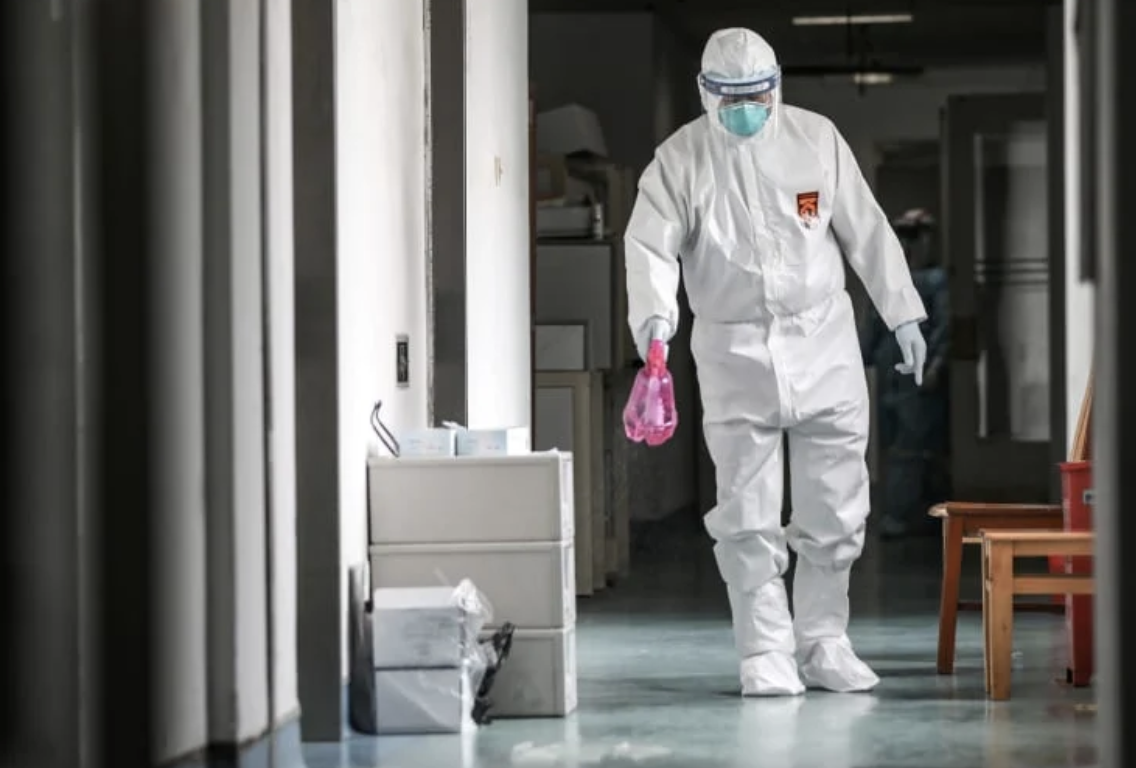New CDC Study Shows Coronavirus Can Survive For Hours On Floors, Walls, Shoes
A preview of a new study by the US Centers for Disease Control and Prevention – the CDC, for short – released last night offers some distressing news for health-care workers, as well as their families, partners and friends: New research suggests that nurses, doctors and others can track the virus out of the ward and into another – perhaps a more public, or less well-protected – environment, helping to spread the disease in a new way that public health officials haven’t really considered.
The study, entitled “Aerosol and Surface Distribution of Severe Acute Respiratory Syndrome Coronavirus 2 in Hospital Wards, Wuhan, China, 2020”, was conducted in two wards at Wuhan’s Huoshenshan Hospital by large team of Chinese researchers back in February and March. Though the team insisted that “respiratory droplets and close contact” remain the primary vectors for the disease, the possibility for hospital workers to transmit the virus on their shoes and clothes wasn’t really well understood, until now.
And unfortunately, if the data are confirmed, it would suggest that wards where coronavirus patients are treated are literally crawling with the virus, placing these health-care workers at extremely high risk for infection.
According to the research, “94% of swabs taken from the ICU floor and 100% of swabs taken from one of the general wards used to treat patients with severe symptoms tested positive for coronavirus.”
Here’s a summary of the research that describes how the GW and ICU were found to have the highest levels of the virus present on the floors and walls, as well as in the air. The rate of positivity was higher for the ICU than the GW, which makes sense.
Even samples taken from the floor in the nearby hospital pharmacy showed ‘weak positive’ for the virus. Patients are not allowed in the pharmacy, meaning there’s only one way the samples could have gotten there.
From February 19 through March 2, 2020, we collected swab samples from potentially contaminated objects in the ICU and GW as described previously. The ICU housed 15 patients with severe disease and the GW housed 24 patients with milder disease. We also sampled indoor air and the air outlets to detect aerosol exposure. Air samples were collected by using a SASS 2300 Wetted Wall Cyclone Sampler at 300 L/min for of 30 min. We used sterile premoistened swabs to sample the floors, computer mice, trash cans, sickbed handrails, patient masks, personal protective equipment, and air outlets. We tested air and surface samples for the open reading frame (ORF) 1ab and nucleoprotein (N) genes of SARS-CoV-2 by quantitative real-time PCR.
Almost all positive results were concentrated in the contaminated areas (ICU 54/57, 94.7%; GW 9/9, 100%); the rate of positivity was much higher for the ICU (54/124, 43.5%) than for the GW (9/114, 7.9%) (Tables 1, 2). The rate of positivity was relatively high for floor swab samples (ICU 7/10, 70%; GW 2/13, 15.4%), perhaps because of gravity and air flow causing most virus droplets to float to the ground. In addition, as medical staff walk around the ward, the virus can be tracked all over the floor, as indicated by the 100% rate of positivity from the floor in the pharmacy, where there were no patients. Furthermore, half of the samples from the soles of the ICU medical staff shoes tested positive. Therefore, the soles of medical staff shoes might function as carriers. The 3 weak positive results from the floor of dressing room 4 might also arise from these carriers. We highly recommend that persons disinfect shoe soles before walking out of wards containing COVID-19 patients.
The authors suggested that “air flow” and the forces of gravity might be responsible for moving the samples to the floors and the walls.But this certainly doesn’t bode well for anybody arguing that the subway and restaurants will be able to go quickly back to normal, since an asymptomatic diner can leave the virus at their table for the next customer to pick up even if the table sits empty for hours – or even overnight.
Tyler Durden
Mon, 04/13/2020 – 08:41
via ZeroHedge News https://ift.tt/3ejDAFt Tyler Durden
